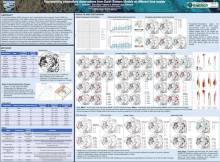Representing observations from Earth System Models in water and food security at different space and time scales
Kurt
Solander
Los Alamos National Laboratory
Poster
Simulations from Earth System Models represent our best ability to characterize future changes in the Earth System due to climate change. However, failure to adequately compare ESM outputs against observations often hampers their utility as a tool to aid in planning for future climate change. We assess ESM model performance across multiple projects to better understand the context in which these models can be applied for a variety of applications in water and food security. Specifically, we investigate the ability to represent streamflow variability including high and low flows as well as seasonality in both Arctic and high montane environments in managed and unmanaged systems, water resource dynamics that have relevance for plants in tropical environments, as well as drought impacts on crop production. We focus on discussing which temporal and spatial resolution is necessary for the given application to understand future change. The success of different techniques such as statistical bias correction, temporal averaging, best-fit model selection, as well as important caveats when making these comparisons are also discussed. Research outcomes from these projects are anticipated to be useful for understanding the most appropriate applications for ESMs when attempting to understand changes under a future climate.

Poster file
solander-kurt_-onfronting_poster.pd-.pdf
(3.68 MB)
